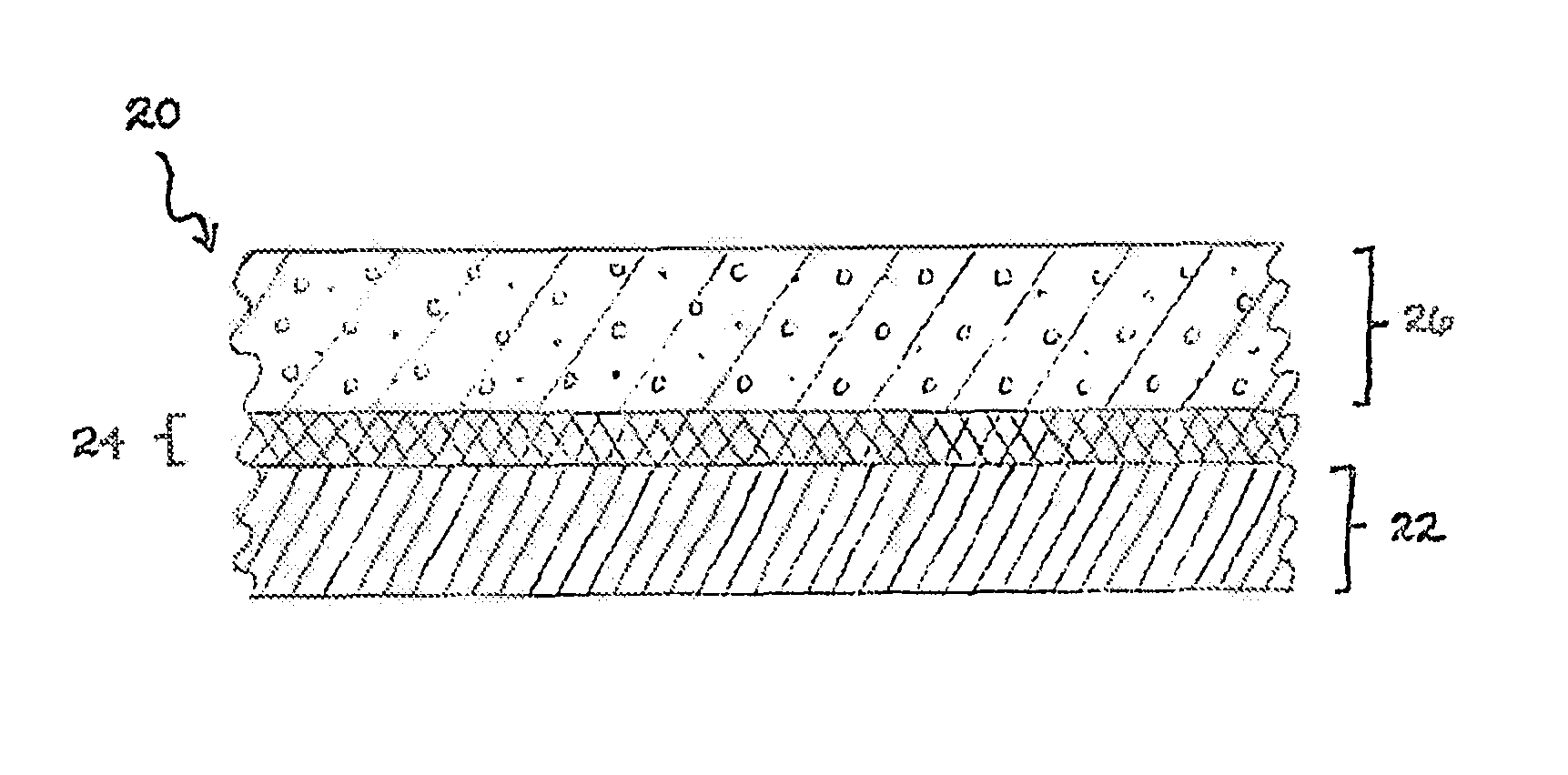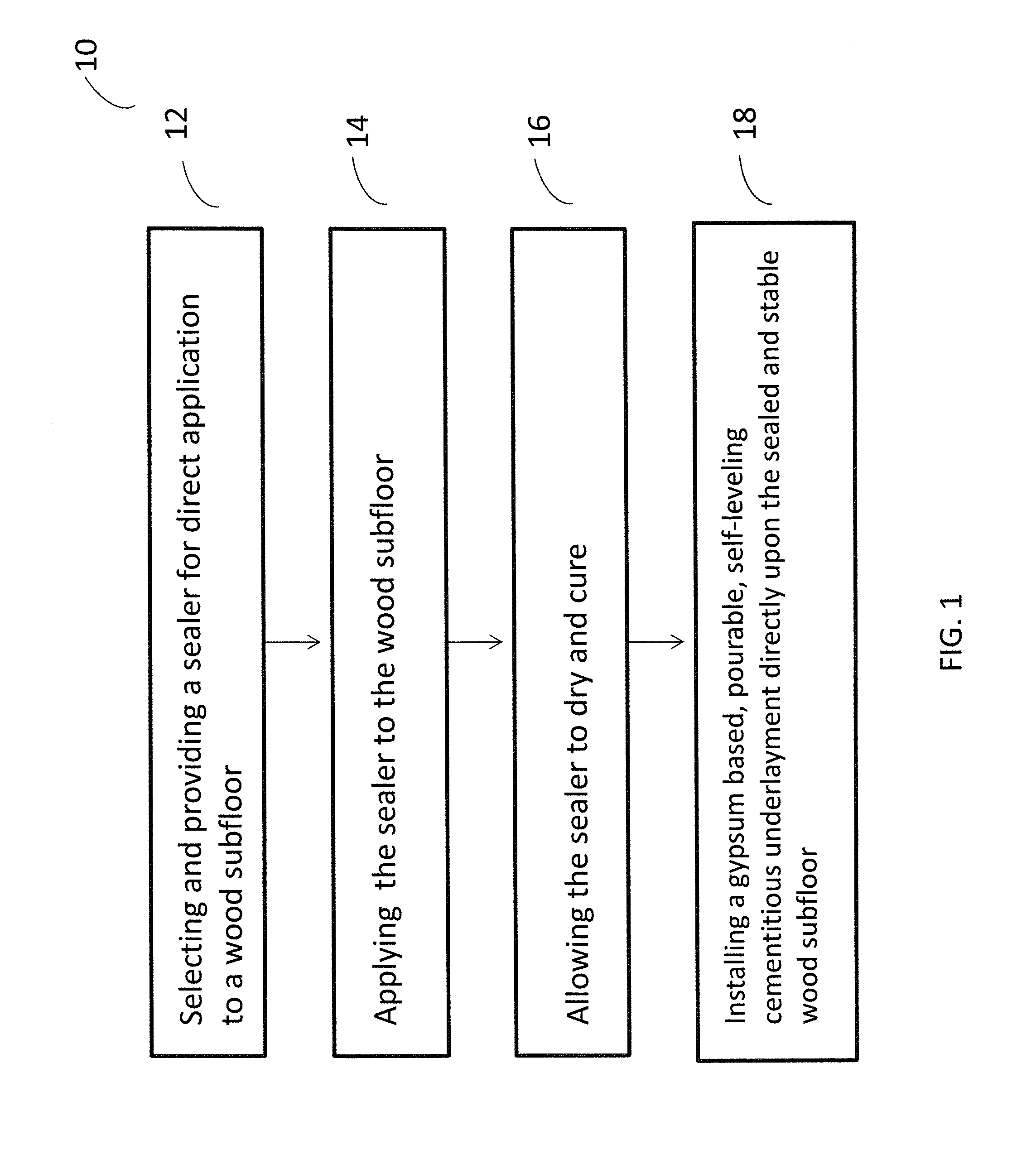Method for sealing wood subfloors
a technology for subfloors and wood, applied in the direction of resiliently mounted floors, building materials handling, etc., can solve the problems of excessive moisture emission, costly replacement of finish flooring, lifting and/or separating of finish flooring from the substrate, etc., to improve the flooring system, less labor, and cost saving
- Summary
- Abstract
- Description
- Claims
- Application Information
AI Technical Summary
Benefits of technology
Problems solved by technology
Method used
Image
Examples
Embodiment Construction
[0019]A method is provided for utilizing an epoxy resin sealer, such as SIKAFLOOR® Fast Track Primer (“FTP”) concrete sealer, or similar epoxy system, optionally with an underlayment, over a wood substrate. It is believed that the wood substrate is stabilized by the present low viscosity, water-borne epoxy sealer, which allows the wood to generally maintain its pre-application dimensions, and not swell unacceptably. Water from the environment, including any cementitious underlayment that may be placed between the subfloor and the finish floor, is appreciably prevented from passing into the wood. Therefore, the wood does not appreciably swell and movement between the floor underlayment or topping and the subfloor is reduced. This reduces the likelihood of cracking of the underlayment or finish floor.
[0020]As illustrated in FIG. 1, a method (10) is provided for applying a flooring system upon a wood subfloor, including a step (12) of selecting and providing a sealer for direct applica...
PUM
| Property | Measurement | Unit |
|---|---|---|
| thickness | aaaaa | aaaaa |
| thickness | aaaaa | aaaaa |
| size | aaaaa | aaaaa |
Abstract
Description
Claims
Application Information
 Login to View More
Login to View More - R&D
- Intellectual Property
- Life Sciences
- Materials
- Tech Scout
- Unparalleled Data Quality
- Higher Quality Content
- 60% Fewer Hallucinations
Browse by: Latest US Patents, China's latest patents, Technical Efficacy Thesaurus, Application Domain, Technology Topic, Popular Technical Reports.
© 2025 PatSnap. All rights reserved.Legal|Privacy policy|Modern Slavery Act Transparency Statement|Sitemap|About US| Contact US: help@patsnap.com



